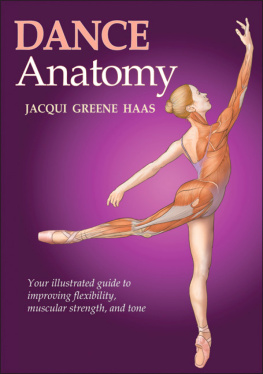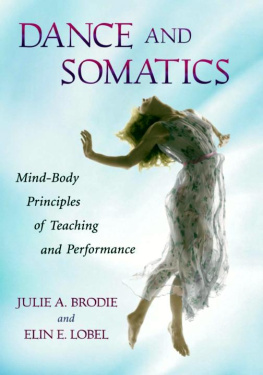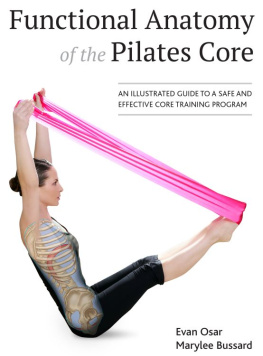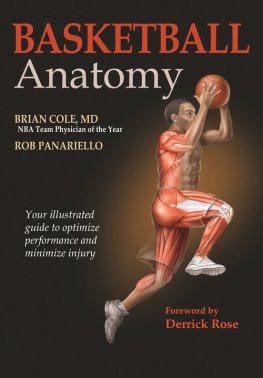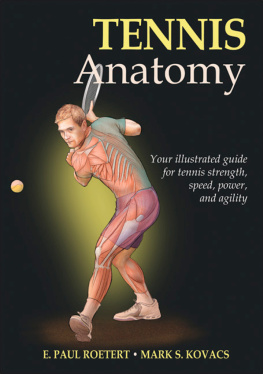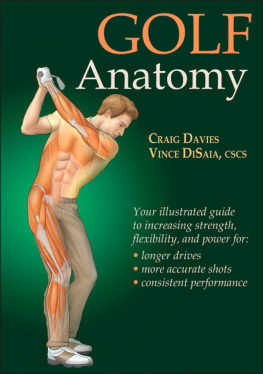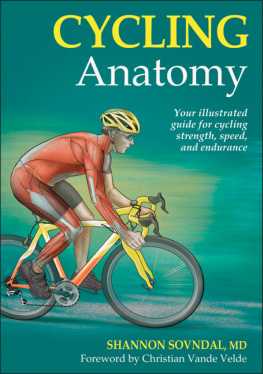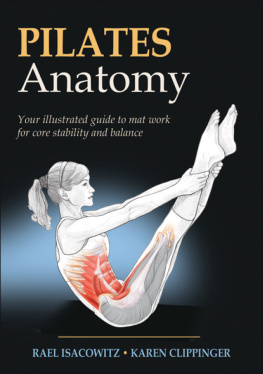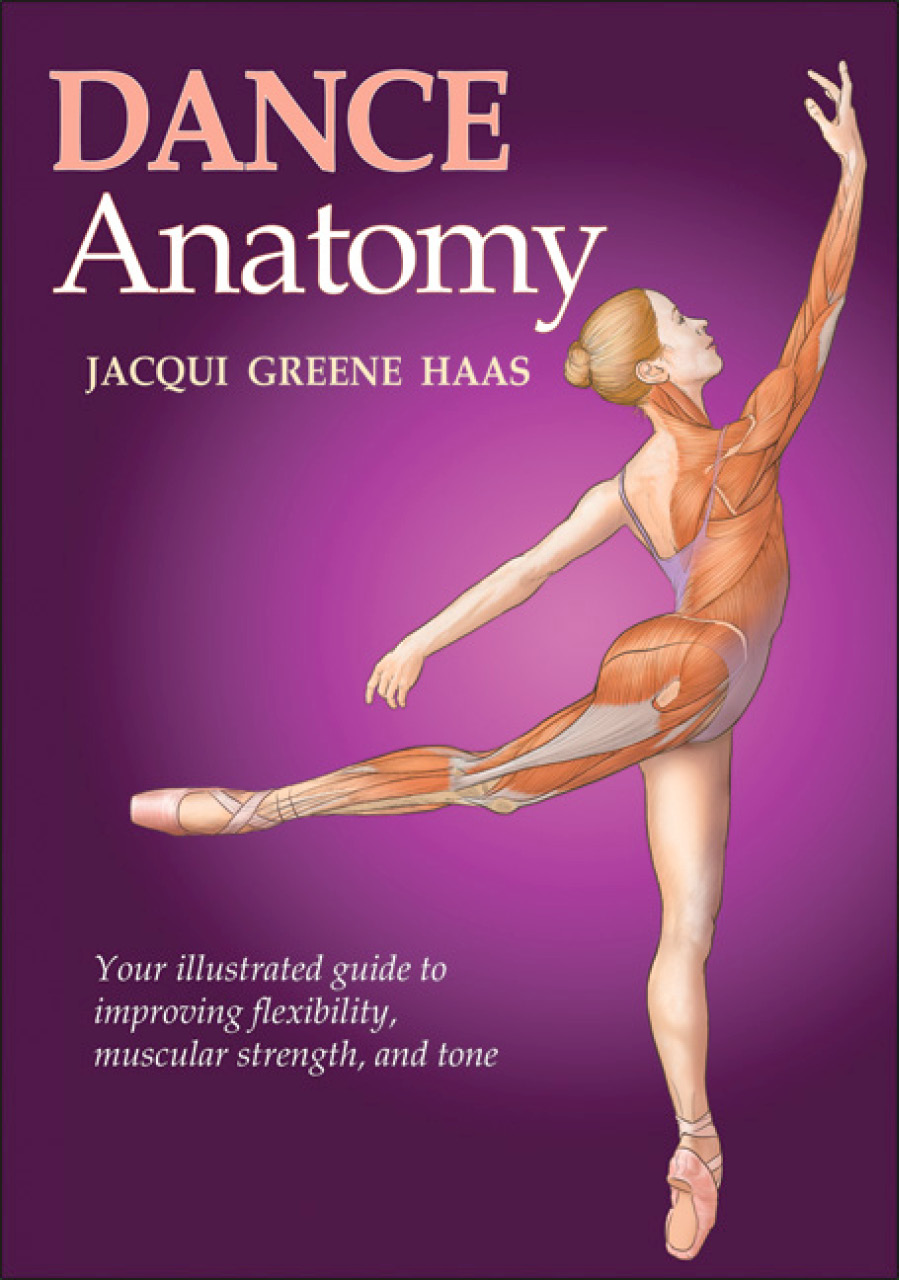DANCE ANATOMY
Jacqui Greene Haas
Human Kinetics
Library of Congress Cataloging-in-Publication Data
Haas, Jacqui Greene, 1958
Dance anatomy / Jacqui Greene Haas.
p. cm.
ISBN-13: 978-0-7360-8193-1 (soft cover)
ISBN-10: 0-7360-8193-3 (soft cover)
1. Dance--Physiological aspects. I. Title.
RC1220.D35H33 2010
612.044--dc22
2009045722
ISBN-10: 0-7360-8193-3 (print)
ISBN-13: 978-0-7360-8193-1 (print)
Copyright 2010 by Jacqui Greene Haas
All rights reserved. Except for use in a review, the reproduction or utilization of this work in any form or by any electronic, mechanical, or other means, now known or hereafter invented, including xerography, photocopying, and recording, and in any information storage and retrieval system, is forbidden without the written permission of the publisher.
This publication is written and published to provide accurate and authoritative information relevant to the subject matter presented. It is published and sold with the understanding that the author and publisher are not engaged in rendering legal, medical, or other professional services by reason of their authorship or publication of this work. If medical or other expert assistance is required, the services of a competent professional person should be sought.
Acquisitions Editors: Judy Patterson Wright, PhD, Laurel Plotzke Garcia; Developmental Editors: Amanda Eastin-Allen, Cynthia McEntire; Assistant Editor: Laura Podeschi; Copyeditor: Jan Feeney; Permission Manager: Martha Gullo; Graphic Designer: Fred Starbird; Graphic Artist: Kim McFarland; Cover Designer: Keith Blomberg; Photographer (for illustration references): Peter Mueller; Photo Manager: Neil Bernstein; Visual Production Assistant: Joyce Brumfield; Art Manager: Kelly Hendren; Associate Art Manager: Alan L. Wilborn; Illustrator (cover): Jennifer Gibas; Illustrators (interior): Fran Milner, Jennifer Gibas; Printer: Courier Corporation
Human Kinetics books are available at special discounts for bulk purchase. Special editions or book excerpts can also be created to specification. For details, contact the Special Sales Manager at Human Kinetics.
Printed in the United States of America 10 9 8 7 6 5 4 3 2 1
The paper in this book is certified under a sustainable forestry program.
Human Kinetics
Web site: www.HumanKinetics.com
United States: Human Kinetics
P.O. Box 5076
Champaign, IL 61825-5076
800-747-4457
e-mail: humank@hkusa.com
Canada: Human Kinetics
475 Devonshire Road Unit 100
Windsor, ON N8Y 2L5
800-465-7301 (in Canada only)
e-mail: info@hkcanada.com
Europe: Human Kinetics
107 Bradford Road
Stanningley
Leeds LS28 6AT, United Kingdom
+44 (0) 113 255 5665
e-mail: hk@hkeurope.com
Australia: Human Kinetics
57A Price Avenue
Lower Mitcham, South Australia 5062
08 8372 0999
e-mail: info@hkaustralia.com
New Zealand: Human Kinetics
P.O. Box 80
Torrens Park, South Australia 5062 0800 222 062
e-mail: info@hknewzealand.com
E4776
Converted to eBook by EasyEPUB
Preface
D ance is an extraordinary display of physical skill that can convey both raw energy and charming delight. Chiseled poses, innovative choreography, and striking images are the hallmarks of the art form. As a dancer today, you are truly fortunate. The opportunities to perform in competitions, Broadway shows, and professional ballet companies readily exist if you are strong and talented. Dance represents impeccable balance, intense muscular control, grace, rhythm, and speed. What could be more exciting than to be chosen by the artistic director to perform a leading role? But you must be mentally and physically fit in order to compete in this high-performance market. The need to impress audiences has never been more evident; extreme choreography sells tickets and wins competitions.
Dance schools, studios, and academies are busy places. Classes, rehearsals, performances, and competition schedules are overwhelming. You are working harder than ever and doing your best to understand every correction given. Your instructors are inundated with teaching technique, musicality, and tricky choreography as well as marketing their business. Sometimes the details of technique class can get overlooked. Dance technique has been passed down over the years with very little anatomical analysis. This tradition might have worked for generations, but in order for you to have an edge over other dancers today, you must understand basic anatomy and receive the most proficient training.
Each combination at the barre and in the center must have a definitive purpose. The barre work is not just a series of plis and tendus but an organization of your body. Technique class should emphasize the development of muscular strength to control and protect the joints. You need to understand the actions of the muscle groups that create the various combinations of dance positions. For example, the muscles that create extension of a joint must contract throughout the whole range. If you are not sure which muscles create the extension, how can you possibly execute that combination effectively? You will continue to overrecruit the wrong muscles, either building bulk or causing an overuse injury.
Dance Anatomy will assist you in discovering more efficient ways of improving technique. You will enhance your movements by knowing exactly which muscles contract to create the action. This book has more than 100 illustrations of exercises that give you a visual understanding of anatomy. You will see inside every tendu, pass, and arabesque to help you improve your lines.
Each chapter addresses a key principle of movement to help you improve performance. Chapter 1 is the foundation of the book; it highlights three beautiful positions of dance showing the entire body and the musculature. This chapter also emphasizes the importance of having a basic understanding of how your body works through descriptions of anatomy, movement planes, and muscular actions.
Chapters 2 through 8 have been organized moving through the body from the center out. Chapter 2 addresses spinal alignment and placementwhere it all begins. The spinal curves and all movements of the spine are addressed. Specific exercises are devoted to placement of the spine. The exercises in this chapter are not meant to be challenging; they are meant to educate you on muscular awareness and its role in supporting the spine for better alignment.
Chapter 3 focuses on the anatomy of breathing. Its common for dancers to breathe with the upper chest, creating tension and early fatigue. The illustrations show how the diaphragm, the lungs, and the ribs work together to provide more oxygen to your body and improve stamina. The five exercises in this chapter emphasize the details of breathing during various movements; they are meant to encourage quality of upper-body movement and reduce upper-body tension.
Chapter 4 details the role of the core musculature in dance movement and presents exercises that develop strength in the core. The quadratus lumborum and the iliopsoas also work together with the abdominal layers to provide stability for the spine. A basic dance class might not address all layers of abdominal muscles and their importance in enhancing technique, so supplemental core conditioning work is almost always necessary for dancers.

